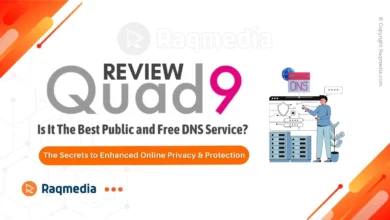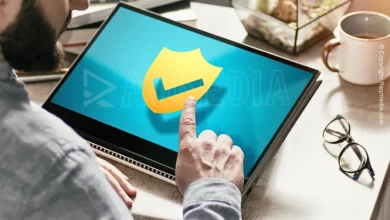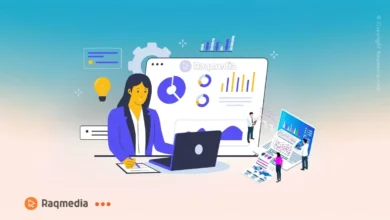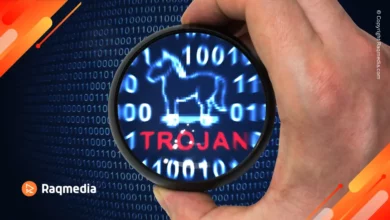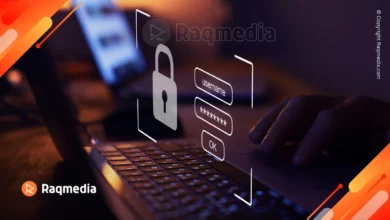In the intricate world of secure communication, the journey from Enigma to end-to-end encryption unveils a captivating evolution that has shaped the way we safeguard information. As history enthusiasts dust off the remnants of the Enigma machine's cryptic whispers from WWII, they witness a pivotal moment where secrets were both shielded and exposed. Through the lens of time, the advancements in encryption techniques stand as testaments to human ingenuity, perseverance, and the unyielding pursuit of secure digital discourse.
Table of Contents
- 1 The Evolution of Secure Communication: From Enigma to End-to-End Encryption
- 2 Enigma Machine: A Historical Perspective
- 3 Birth of Public Key Cryptography
- 4 Development of SSL/TLS Protocols
- 5 The Rise of End-to-End Encryption in Messaging Apps
- 6 Quantum Cryptography: Securing Communication for the Future
- 7 Ensuring Data Security in an Evolving Digital Landscape
- 8 Pioneering Advances in Secure Communication
- 9 Exploring the Future of Secure Communication
- 10 Frequently Asked Questions About Secure Communication:
- 10.1 1. How has encryption evolved over time?
- 10.2 2. What is the role of quantum cryptography in securing communications?
- 10.3 3. Why is end-to-end encryption crucial for user privacy?
- 10.4 4. How can individuals enhance their data security through encryption practices?
- 10.5 5. What are some collaborative efforts essential for mitigating cybersecurity risks?
The Evolution of Secure Communication: From Enigma to End-to-End Encryption
Let us immerse ourselves in this narrative of innovation and resilience, where each encryption method serves as a stepping stone into an era marked by ever-heightening security demands. From Enigma’s enigmatic puzzles to the seamless layers of end-to-end encryption fortifying our digital interactions today, a symphony of complexity weaves through these technological epochs.
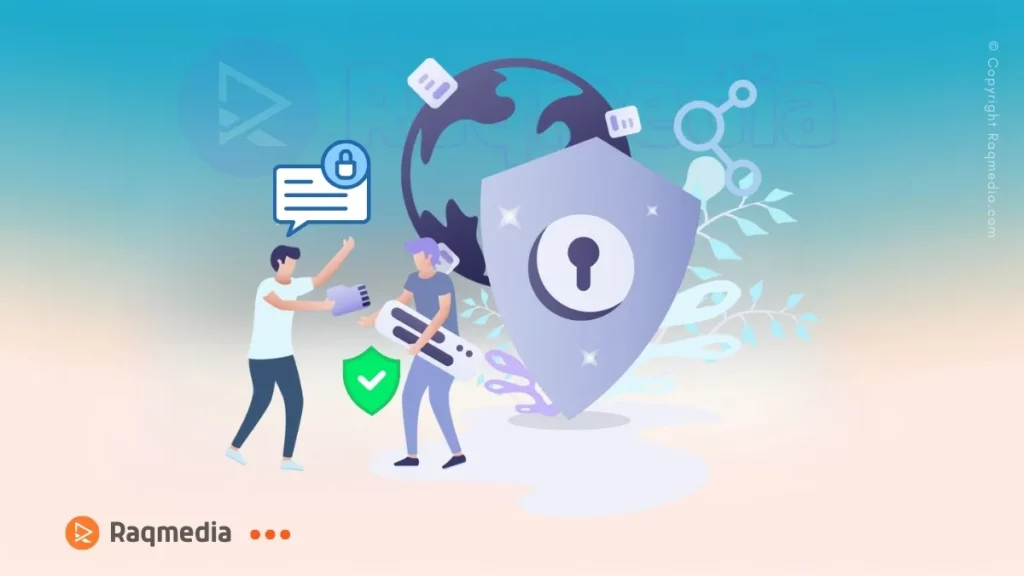
Unraveling the threads that bind past endeavors and future aspirations reveals not just the evolution of algorithms but also echoes a story resplendent with strategic triumphs and cryptographic innovations. Join us on this transformative odyssey through time where cryptography metamorphoses from a cloak-and-dagger art into an indispensable shield for modern communications.
Enigma Machine: A Historical Perspective
During World War II, the Enigma machine played a pivotal role in ensuring secure communication for the Axis powers, particularly the German military. This electro-mechanical cipher device encrypted messages with an intricate system of rotors and plugboards, creating seemingly unbreakable codes. The ability of the Enigma machine to generate complex ciphers posed a significant challenge for Allied cryptanalysts striving to intercept and decode enemy transmissions. The secrecy surrounding the Enigma machine and its operational procedures elevated its importance in maintaining confidential communications during wartime.
Breaking the Enigma cipher was a monumental task that required relentless dedication and exceptional cryptographic skills. Alan Turing and his team at Bletchley Park made significant breakthroughs in deciphering Enigma-encoded messages through their innovative work on early computers like Colossus. By leveraging insights from intercepted messages and exploiting mathematical patterns within the encoded text, cryptanalysts managed to crack the Enigma code, providing Allied forces with crucial intelligence that influenced strategic decisions in key battles. The successful decryption of Enigma signals marked a turning point in cryptography history, showcasing the power of innovation and collaboration in overcoming seemingly insurmountable challenges.
The impact of cracking the Enigma code reverberated far beyond WWII, shaping the trajectory of future encryption technologies. Lessons drawn from decrypting Enigma laid foundational principles for modern cryptographic techniques, emphasizing the importance of randomness, key management, and algorithmic complexity in ensuring robust security measures.
The enduring legacy of the Enigma machine lies not only in its wartime significance but also in catalyzing advancements that paved the way for more sophisticated encryption methods aimed at safeguarding digital communications against ever-evolving threats. Through understanding the historical context of the Enigma machine, we gain valuable insights into how encryption has evolved to meet contemporary cybersecurity needs while honoring the ingenuity of those who pioneered secure communication methods under extraordinary circumstances.
Birth of Public Key Cryptography
Public key cryptography, a monumental breakthrough in the realm of secure communication, emerged during the 1970s with the pioneering work of Whitfield Diffie and Martin Hellman. This revolutionary concept introduced a new method where separate keys for encryption and decryption were used, enabling secure data exchange over insecure channels. Unlike traditional symmetric key cryptography, public key cryptography offered a scalable solution without the need for pre-shared secrets between communicating parties. The introduction of this asymmetric cryptographic system laid the foundation for modern security protocols and digital signatures.
One crucial aspect of ensuring secure communication is staying informed about the latest encryption trends and technologies. By keeping abreast of emerging encryption methods like post-quantum cryptography or blockchain-based encryption, you can adapt your security strategies to combat evolving cyber threats effectively. For instance, following tech blogs, attending cybersecurity conferences, and engaging with industry experts can provide valuable insights into cutting-edge encryption solutions.
The advent of public key cryptography not only transformed encryption methods but also opened up new possibilities in securing online transactions and communications. One notable application is Secure Sockets Layer (SSL) and its successor Transport Layer Security (TLS), which utilize public key infrastructure to establish secure connections over the internet. By employing public key cryptography, SSL/TLS protocols ensure data integrity, confidentiality, and authenticity in web browsing, e-commerce transactions, and email communication. This pivotal technology has become integral to maintaining trust and privacy in today's interconnected digital landscape.
In real-world scenarios, public key cryptography plays a crucial role in safeguarding sensitive information across diverse industries. For instance, financial institutions use it to encrypt customer data during online banking activities to prevent unauthorized access. Digital signatures based on public key infrastructure authenticate emails, documents, and software updates, protecting against tampering or impersonation. The widespread adoption of public key cryptography underscores its significance in mitigating cybersecurity risks and fortifying data protection mechanisms across various sectors.
Development of SSL/TLS Protocols
The evolution of Secure Sockets Layer (SSL) and Transport Layer Security (TLS) protocols has been pivotal in ensuring the secure transmission of data over the internet. Originally developed by Netscape in the mid-1990s, SSL served as a cryptographic protocol to establish an encrypted link between a web server and a browser. As online transactions grew, so did the need for enhanced security measures. This led to the subsequent development of TLS, which is an improved version of SSL, with stronger encryption algorithms and protocols that ensure data integrity during communication.
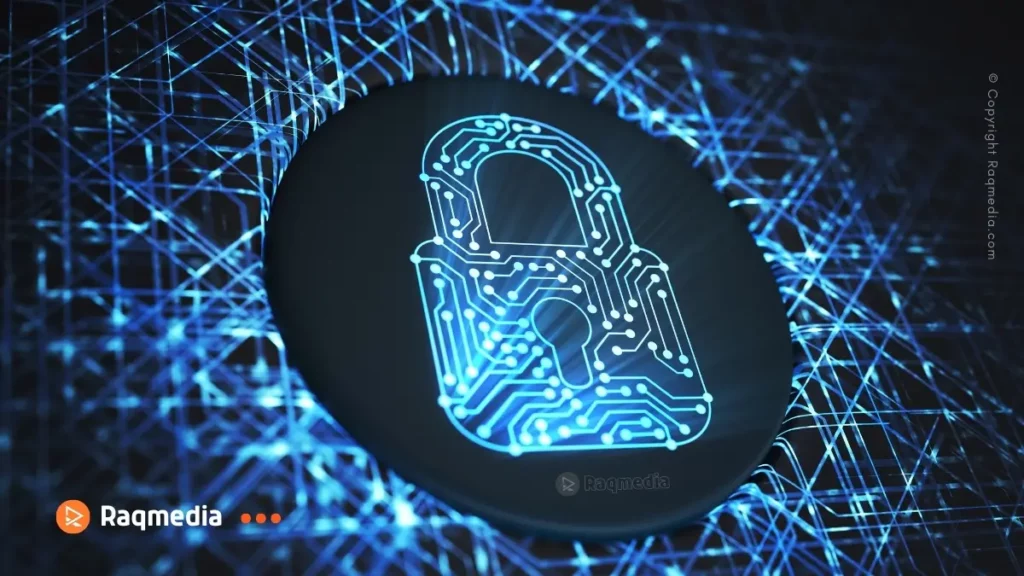
SSL/TLS plays a critical role in safeguarding sensitive information, such as credit card details and personal data, during online transactions. By encrypting data exchanges between clients and servers, SSL/TLS protocols prevent unauthorized access and interception by cybercriminals. E-commerce websites, online banking platforms, and various web applications rely on SSL/TLS to create a secure environment for users to share confidential information without fear of it being compromised.
Over time, SSL/TLS has faced challenges such as vulnerabilities in outdated encryption algorithms and implementation flaws leading to security breaches. Notable incidents like the POODLE attack highlighted weaknesses in SSL 3.0, prompting the industry to phase out older versions in favor of more secure iterations. Continuous enhancements in TLS versions have addressed these vulnerabilities and introduced stronger encryption methods to adapt to evolving cybersecurity threats. The ongoing efforts to improve SSL/TLS reflect a commitment to staying ahead of malicious actors aiming to exploit weaknesses in encryption protocols.
In conclusion, the development of SSL/TLS protocols showcases a transformative journey in securing online communication channels. From modest beginnings as SSL protecting early internet users' interactions to robust TLS implementations fortifying modern-day digital transactions, these protocols have been instrumental in maintaining data confidentiality and integrity across the web. By mitigating vulnerabilities through regular updates and adopting best practices in encryption standards, SSL/TLS continues its evolution as a cornerstone of secure online communication infrastructure.
The Rise of End-to-End Encryption in Messaging Apps
In today's digital age, the importance of privacy and security in online communication cannot be overstated. End-to-end encryption has emerged as a gold standard for ensuring users' messages remain confidential from the moment they leave one device until they reach the intended recipient's device. This level of encryption means that only the sender and the receiver can access the unencrypted content, making it nearly impossible for intermediaries or malicious actors to intercept or decipher the messages in transit.
One of the key benefits of end-to-end encryption is its ability to provide users with a high degree of confidentiality and authenticity. This means that even if a messaging service provider is compromised by external threats, the encrypted data remains indecipherable without the decryption keys held by the sender and receiver. By implementing end-to-end encryption, messaging apps empower users with a sense of control over their personal data and communications, fostering trust in the platform.
Popular messaging apps such as WhatsApp, Signal, and Telegram have embraced end-to-end encryption to enhance user privacy and security. WhatsApp, for example, made headlines by adopting this technology to protect its billions of users worldwide. Signal, known for its commitment to privacy-centric features, offers open-source end-to-end encryption protocols for secure messaging. These platforms have set a precedent in prioritizing user confidentiality while still delivering seamless communication experiences.
Enhancing data security involves implementing a multi-layered approach to encryption. By combining different cryptographic protocols such as symmetric and asymmetric encryption along with robust authentication mechanisms, you create a more resilient defense against potential breaches. For example, adopting end-to-end encryption in conjunction with secure data transmission protocols like SSL/TLS adds multiple layers of protection to safeguard sensitive information across various communication channels.
Despite its advantages, end-to-end encryption does pose some challenges, particularly concerning law enforcement access to encrypted data during criminal investigations. The debate between balancing user privacy rights and public safety needs continues to be a contentious issue globally. However, as messaging apps evolve and integrate robust security features like end-to-end encryption into their services, users can communicate with confidence knowing that their conversations are shielded from unauthorized access.
Quantum Cryptography: Securing Communication for the Future
As technology advances, quantum cryptography emerges as a groundbreaking method to secure communication in an ever-evolving digital landscape. Unlike traditional cryptographic methods that rely on mathematical complexity, quantum cryptography leverages the principles of quantum mechanics to achieve unparalleled security. One of the key advantages offered by quantum cryptography is its ability to detect any unauthorized interception of data, providing a level of security that is inherently unbreakable due to the principles of quantum superposition and entanglement. This means that any attempt to eavesdrop on quantum-encrypted communications would disrupt the delicate quantum state, alerting both parties to potential breaches.
Despite its promise, quantum cryptography faces various challenges and intriguing research areas that shape its future trajectory. Quantum key distribution (QKD), a cornerstone of quantum cryptography, requires overcoming practical limitations such as signal loss in fiber optic cables and ensuring reliable operations in real-world scenarios. Researchers are exploring novel techniques like satellite-based QKD to establish secure global communication networks resistant to traditional hacking methods. Furthermore, the development of post-quantum cryptography aims to safeguard current encryption standards against future threats posed by quantum computers capable of breaking existing algorithms.
The fascinating realm of quantum cryptography not only promises unmatched security but also opens doors to revolutionary applications across diverse industries. For instance, financial institutions can adopt quantum-resistant cryptographic protocols to protect sensitive transactions from emerging cyber threats. Additionally, healthcare sectors can leverage quantum-safe encryption to safeguard patient data with utmost confidentiality. As governments and organizations invest in research and development initiatives, the future holds exciting possibilities where secure communication transcends conventional boundaries through the power of quantum technologies.
Ensuring Data Security in an Evolving Digital Landscape
In today's rapidly evolving digital landscape, the need for robust encryption mechanisms to safeguard sensitive information has never been more critical. With cyber threats becoming increasingly sophisticated and prevalent, encryption stands as a bulwark against unauthorized access and data breaches. Individuals and organizations alike must prioritize implementing strong encryption practices to shield their communications and data from potential adversaries. From securing financial transactions to protecting personal conversations, encryption forms the bedrock of trust in the digital realm.
To enhance data security effectively, individuals can adopt best practices such as using reputable end-to-end encryption tools for messaging and ensuring that all devices are updated with the latest security patches. Organizations, on the other hand, can implement comprehensive encryption strategies across their networks and databases to mitigate risks associated with cyber attacks. By fostering a culture of encryption awareness and adherence to security protocols, both individuals and businesses can fortify their defenses against modern threats like phishing scams, ransomware attacks, and data theft incidents.
Collaborative efforts among tech companies, policymakers, and cybersecurity experts play a pivotal role in mitigating security risks on a broader scale. By sharing threat intelligence, developing industry standards for encryption protocols, and advocating for user privacy rights, these stakeholders can collectively combat emerging cyber threats. Through cross-sector partnerships that prioritize innovation while upholding data protection principles, the cybersecurity community can stay ahead of malicious actors seeking to exploit vulnerabilities in digital systems.
Pioneering Advances in Secure Communication
From the historic breakthroughs of early cryptographic methods like the Enigma machine to the advent of advanced end-to-end encryption technologies used in modern messaging apps, the journey through secure communication has been marked by innovation and resilience. As we recapitulate these key milestones along this evolutionary path, it becomes evident that evolving encryption techniques have played a pivotal role in shaping secure communications dynamics over time. The shift towards end-to-end encryption signifies not just a technological advancement but also a commitment to upholding user privacy in an era defined by digital connectivity.
Educating users about best practices in secure communication is paramount in fortifying overall data security. Conducting regular training sessions on password management, phishing awareness, and encrypted messaging platforms empowers individuals to make informed choices that protect their digital privacy. Offering user-friendly tools with built-in encryption features further encourages adoption of secure communication habits within organizations and among personal users.
Emphasizing the critical nature of continuous exploration into new cryptographic horizons is essential for bolstering data protection measures further. As technology progresses and threats evolve, staying at the forefront of cryptographic advancements enables us to adapt proactively to emerging risks while harnessing cutting-edge solutions for safeguarding sensitive information. By championing a culture of innovation tempered with security consciousness, we pave the way for a future where secure communication is not just an ideal but a fundamental pillar of our interconnected world.
Exploring the Future of Secure Communication
As we journeyed through the evolution of secure communication from the Enigma machine to end-to-end encryption, it becomes evident that technology has continually elevated our ability to protect sensitive information and communications. From the historical significance of cracking Enigma in WWII to the revolutionary advent of public key cryptography and the modern-day applications of SSL/TLS protocols and end-to-end encryption, each milestone has played a pivotal role in shaping how we safeguard digital interactions.
Looking ahead, quantum cryptography emerges as a beacon of hope in fortifying communication channels against future threats posed by quantum computing. By harnessing cutting-edge technologies, we can explore novel cryptographic approaches that offer unparalleled levels of security.
It is imperative for individuals, organizations, tech experts, and policymakers to collaborate in advancing encryption methods further to ensure data confidentiality remains at the forefront of our digital landscape. By embracing innovation and adopting best practices in secure communication, we pave the way for a safer and more resilient cyber environment.
By following these key tips and embracing a proactive approach to data security through continuous learning, comprehensive encryption strategies, and user education initiatives, you can bolster your defenses against cyber threats and contribute to a safer digital environment for all stakeholders involved in secure communications.
Frequently Asked Questions About Secure Communication:
1. How has encryption evolved over time?
– Encryption techniques have advanced from mechanical devices like Enigma to sophisticated algorithms such as end-to-end encryption used in messaging apps today.
2. What is the role of quantum cryptography in securing communications?
– Quantum cryptography leverages principles of quantum mechanics to create unhackable communication channels, offering enhanced security compared to traditional methods.
3. Why is end-to-end encryption crucial for user privacy?
– End-to-end encryption ensures that only intended recipients can access messages sent over a network, preventing unauthorized interception or access by third parties.
4. How can individuals enhance their data security through encryption practices?
– Individuals can improve data security by using strong passwords, enabling two-factor authentication, encrypting sensitive files/devices, and choosing reputable services with robust encryption measures.
5. What are some collaborative efforts essential for mitigating cybersecurity risks?
– Collaboration among tech companies, policymakers, cybersecurity experts is crucial for developing regulations, sharing threat intelligence, researching new cryptographic solutions, and fostering a culture of cyber resilience.
With a deep-rooted understanding of historical breakthroughs and contemporary innovations in secure communication highlighted throughout this journey article—from Enigma's secrets to end-to-end encryption's power – we stand at the cusp of enhancing data protection paradigms through relentless exploration into new cryptographic frontiers. Together, let us champion secure communication dynamics that safeguard privacy and trust in our increasingly interconnected world.


